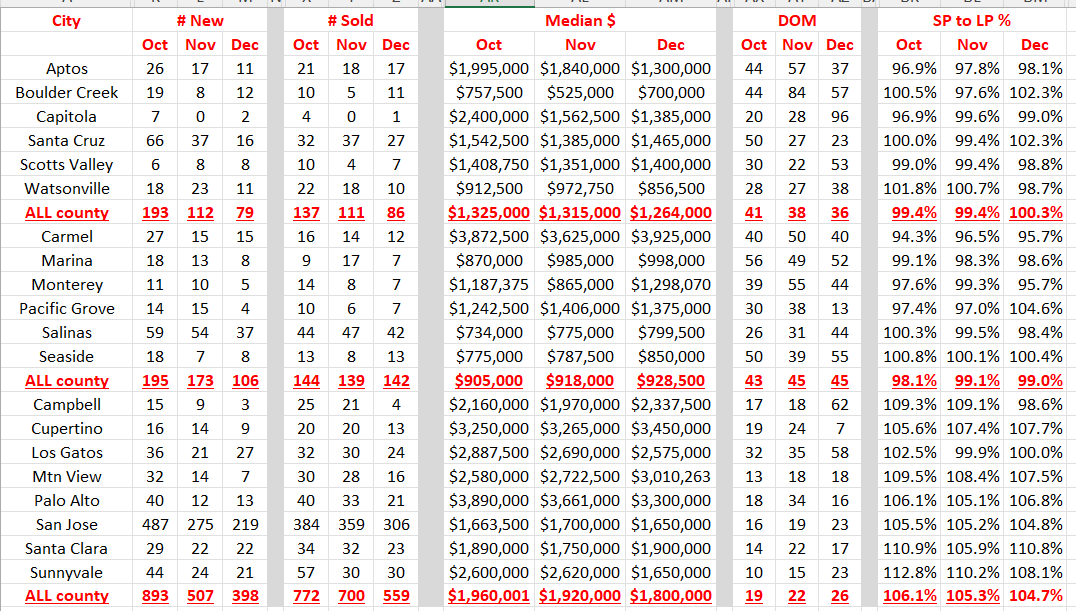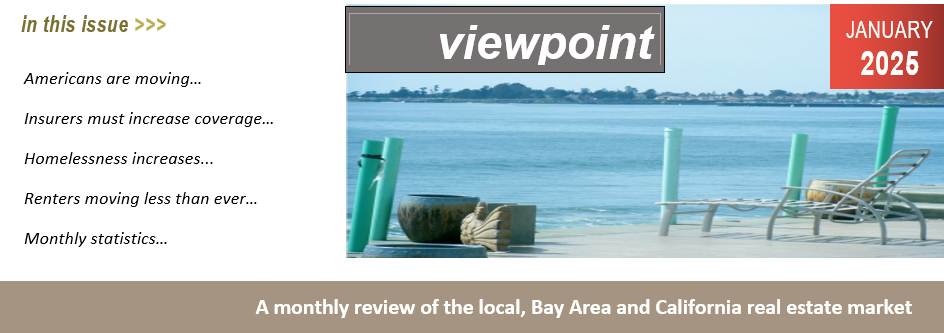JANUARY 2025
Americans are moving, but not for a job
Forty-three percent of real estate pros say job relocation did not play a role in their client's purchase decision, and only 2% say their clients moved because of their employer's office policies, according to NAR's report. Instead, agents reported a greater desire among their clients to seek more affordability and live closer to family and friends. Some home buyers also were motivated to relocate for lower or more favorable taxes, particularly those who moved to the South.
"Home buyers are placing a priority on getting more bang for their buck, looking to areas with not only more space within their home but also favorable taxes," says NAR Deputy Chief Economist Jessica Lautz. "This migration flow will likely continue as retirees and remote workers relocate." Here are the top motivating factors identified for relocations, broken down by geographic area.
Notably, many relocators do not sell their previous home, NAR's report shows. Twenty percent of relocating buyers say they kept their previous residence as an investment, rental or vacation property; this is most likely to occur with buyers moving to the West and Northeast.
California insurers required to increase coverage in wildfire areas
Insurance companies that stopped providing home coverage to hundreds of thousands of Californians in recent years as wildfires became more destructive will have to again provide policies in fire-prone areas if they want to keep doing business in California under a state regulation announced Monday.
The rule will require home insurers to offer coverage in high-risk areas, something the state has never done, Insurance Commissioner Ricardo Lara's office said in a statement. Insurers will have to start increasing their coverage by 5 percent every two years until they hit the equivalent of 85 percent of their market share. That means if an insurer writes 20 out of every 100 state policies, they'd need to write 17 in a high-risk area, said Lara's office.
HUD: Housing programs crucial as Homelessness reached new highs
A new report on homelessness from the U.S. Department of Housing and Urban Development paints a picture of an increasingly bleak housing crisis, but perhaps offers some glimmers of hope.
On one night in January, HUD said it counted approximately 771,480 people who were in shelters or temporary housing, or who had no housing at all. This translates to roughly 23 out of every 10,000 people in the United States - the highest number of people experiencing homelessness on record. The figure also represents an 18% year-over-year increase in the total number of homeless people based on HUD's annual point-in-time count.
For families with children, the rise in homelessness between 2023 and 2024 was even sharper, increasing 39%. Of the total homeless count, 150,000 individuals were children.
Should you buy a Fixer-Upper?
Home prices continue to rise, which is keeping many a renter out of the market. But fixer-uppers present a potential opportunity. For starters, the lower prices create the affordability that is lacking in other segments of the market. So, should you be looking for one?
Median home prices are at a record high, while affordability is at one of its lowest points. The reality for many people is that there seems like there is no end in sight to renting. A fixer-upper may present an opportunity simply because of the lower price point that gets you in the door.
Pride of ownership:
Pride of ownership is a real thing for homebuyers. And that pride grows even stronger when you've had a hand in making improvements.
Expecting the unexpected:
You know how on every episode of every renovation show on HGTV there's something in the wall or under the floor or in the attic that makes taking down a wall impossible, or at least price-prohibitive? Get ready for a whole lot of that.
Saving money:
Certain renovations can seem expensive because the labor is factored in. If you're doing the work yourself, you'll be amazed how far your money can go.
Deciding what you can handle:
If you're handy-or merely patient and a quick learner-there may be no limit to your ambition as it relates to buying and fixing up a home. But it behooves you to be realistic, and painfully honest with yourself. Do you have the patience for a massive project? Are you the type who always finishes what you start or is it more likely that you'll end up in a half-done construction zone for months (or years!) on end? How strong is your marriage (because it WILL be tested)? These are just a few of the questions you'll want to ask yourself before you take the fixer-upper leap.
Growing your skills can be lucrative:
The more you learn, the more you can apply to your home. But have you thought about how those skills can translate outside of this one home? Maybe buying and fixing up homes sets you on a new career path.
Paying the right price:
Figuring out what to pay for your fixer-upper might not be so easy because you can't make an apples-to-apples comparison with a home in better condition based on the standard price-per-square-foot equation.
Increasing your home's value:
Greater affordability may be the immediate driver when it comes to buying a fixer-upper, but the potential for appreciation is just as important.
America's renters are moving less than ever
A third (33.6%) of U.S. renters have lived in the same home for at least five years, up from 28.4% a decade ago, according to Redfin. While the majority of renters move within five years-including 25.6% moving within 12 months and 40.8% moving between 1-4 years-the soaring cost of buying a home has pushed many to stay put for longer. The high cost of moving, or paying rental brokers in cities like New York, has also discouraged renters from moving regularly.
Nearly one in six (17%) renters had lived in the same property between 5-9 years in 2023, compared to 14.4% in 2013. Nearly the same number (16.6%) stayed in the same home for 10+ years, compared to 13.9% a decade earlier.
Monthly mortgage payments have nearly tripled over the past decade, preventing many renters from being able to buy a home. Rents spiked during the pandemic but have stayed relatively flat over the past two years as home prices and mortgage rates continued to climb. That has encouraged renters to stay in the same home, where they are less likely to face major rent increases.
The recent construction boom has also led to a record number of new apartments hitting the market, keeping rents down and setting 2025 up as a renter's market where more Americans will choose to rent, or remain renters.
More than a third (34.1%) of baby boomers have lived in the same home for at least 10 years, the most of any generation, while 56% have stayed put for at least five years. At the other end of the age spectrum, more than half of Gen Z renters (52.4%) had lived in their home for less than a year in 2023, the highest share among the generations.
4th Qtr. stats for Santa Cruz, Monterey & Santa Clara County
Comments: Honestly, we are seeing what is typical of this end of the year. Listings are normally down due to lack of interest and the holidays. Median prices are holding steady in most areas and down overall countywide. Days on market have not changed much and once again typical of the time of the year. (Display of MLS data is deemed reliable and is not guaranteed accurate by the MLS as of 12/31/24)
So what's the prediction for 2025?? The U.S. housing market crawled to a standstill last year-and while the latest projections show that 2025 is expected to bring only limited relief to buyers and sellers, there is a glimmer of hope on the horizon.
The year closed out with the strongest seasonal slump since January 2023. Homes lingered on the market for a whopping 70 days, up from 62 in November. It made December 2024 the slowest festive season in five years. Inventory also plummeted 8.6% from November, marking the most precipitous drop in nearly two years.
Meanwhile, mortgage rates reached a six-month high, hitting 6.91% for the average 30-year fixed home loan for the week ending Jan. 2, according to the latest numbers from Freddie Mac. On top of that, in mid-December, the Federal Reserve announced a plan for fewer-than-anticipated rate cuts in 2025, which was expected to have a chilling effect on the already catatonic market.'
The projected above-6% mortgage rate for the duration of 2025 is bad news not only for prospective buyers, but also for would-be sellers, who have spent the past year in the grips of the "lock-in" effect, which has made them unwilling to list their properties and part with their current, significantly lower mortgage rates.
A report from the Consumer Financial Protection Bureau released back in September revealed that about 60% of the 50.8 million active mortgages had interest rates below 4%, way lower than the December rate of 6.91%. Homeowners fortunate enough to be paying off their mortgage at the below-4% rate would think twice before moving to sell their home and then be forced to take out a new mortgage at a much higher rate.
Yikes, are there any glimmers of hope on the horizon? Yes, there is always an opportunity if you know where to look and who to use as your trusted professional. Give me a call and let me help you find it.



